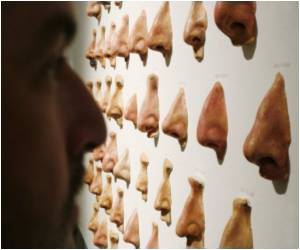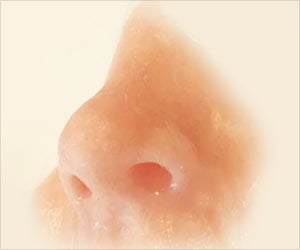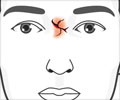- Stem cells can be used to reconstruct damaged neural tissue in the nose
- The stem cells are stimulated and differentiate into olfactory cells
- The olfactory cells regenerate new neural tissue that repairs the nose
The study, published in Stem Cell Reports, was led by Dr. James E. Schwob, MD, PhD, who is a Professor of Developmental, Molecular & Chemical Biology at the Sackler School of Graduate Biomedical Sciences, Tufts University, Massachusetts, USA.
The first author of the study was Dr. Jesse Peterson, PhD, who is currently a Postdoctoral Scientist at the MRC Laboratory of Molecular Biology, Cambridge, UK. Peterson conducted the study as part of his doctoral thesis while at the Sackler School of Graduate Biomedical Sciences, Tufts University, working under the supervision of Schwob.
Read More..
What’s Unique About the Nerve Cells in the Nose?
The uniqueness of the neuronal cells responsible for the sense of smell lies in the fact that they have an inherent capacity to regenerate, following an injury. No other nerve cells in the nervous system exhibit this property. This regenerative capacity arises from the presence of two types of stem cells in the olfactory epithelium – globose basal cells (GBC) and HBCs.The GBCs can be easily cultured and their primary role is to repopulate cells that have been lost by the natural process of cell turnover. The HBCs normally remain dormant and are only activated following an injury. Contrary to GBCs, it has not been possible to culture HBCs as they cannot be expanded and maintained in culture.
In this study, the research team has succeeded in culturing healthy HBCs by establishing the optimal conditions required for expanding and maintaining these cells in culture. This was made possible by following a protocol similar to that used for culturing respiratory stem cells.
“Once we determined that we could grow HBCs in the lab, and that they expressed the same identifying molecular markers found in vivo, we sought to confirm whether they would work as well as the in vivo HBCs - can they regenerate tissue that has been injured - and they did!” says Schwob.
What are the Reasons for Alteration of the Sense of Smell?
Despite the high regenerative capacity of the olfactory epithelium, dysfunctions in the sense of smell can occur. It has been reported in the OLFACAT Study (2012) that the prevalence of smell dysfunction is 19.4 percent – 0.3 percent with a complete loss of smell (anosmia) and 19.1 percent with a partial loss of smell (hyposmia).The following factors have been found to be responsible for smell dysfunction:
- Aging
- Injury
- Upper respiratory tract infection
- Sinus infection
- Polyps in the nasal cavity
- Hormonal disturbances
- Exposure to chemicals
- Smoking
- Neurodegenerative diseases
- Side-effects of certain medicines
How Did the Stem Cells Differentiate into Olfactory Cells?
The researchers found that the cultured HBCs were capable for repopulating the olfactory lesions by regenerating multiple cell types of the olfactory epithelium, including sustentacular (Sus) cells, basal cells, microvillar (MV) cells, and olfactory sensory neurons (OSN).Retinoic acid was used to stimulate the HBCs to undergo differentiation, by lowering the levels on an intracellular protein called P63 present within the HBCs, which resulted in their activation. The P63 protein functions as a ‘Master Switch’ as fluctuation in its level within cells can produce different physiological effects. For example, following injury, P63 levels decrease, which switches the HBCs from a dormant to an active state.
In this regard, Peterson says: “The HBCs in culture remained quiescent, pretty much as they do in vivo, but we were able to trigger them into an active state to start the process of differentiation into various olfactory epithelial cells just before engrafting them into injured tissue.”
Concluding Remarks
This discovery could open new avenues for developing novel therapies based on stem cell transplantation that could, in the future, be able to restore the sense of smell in persons where it has been lost due to degeneration or injury.Schwob concludes: “Now that we can create a reserve of dormant stem cells, we see this as a useful tool for exploring ways to guide cell differentiation toward specific cell types, and develop new stem cell therapies for tissue and sensory regeneration - using the patient’s own stem cells for culturing and transplantation, or pharmacological interventions to activate the patient’s own dormant stem cells within the nose.”
Funding Source
The study was funded by the National Institutes of Health’s National Institute on Deafness and Other Communication Disorders (NIDCD), Bethesda, Maryland, USA.Reference:
- Cultured Stem Cells Reconstruct Sensory Nerve and Tissue Structure in the Nose - (https://now.tufts.edu/news-releases/cultured-stem-cells-reconstruct-sensory-nerve-and-tissue-structure-nose)
Source-Medindia















